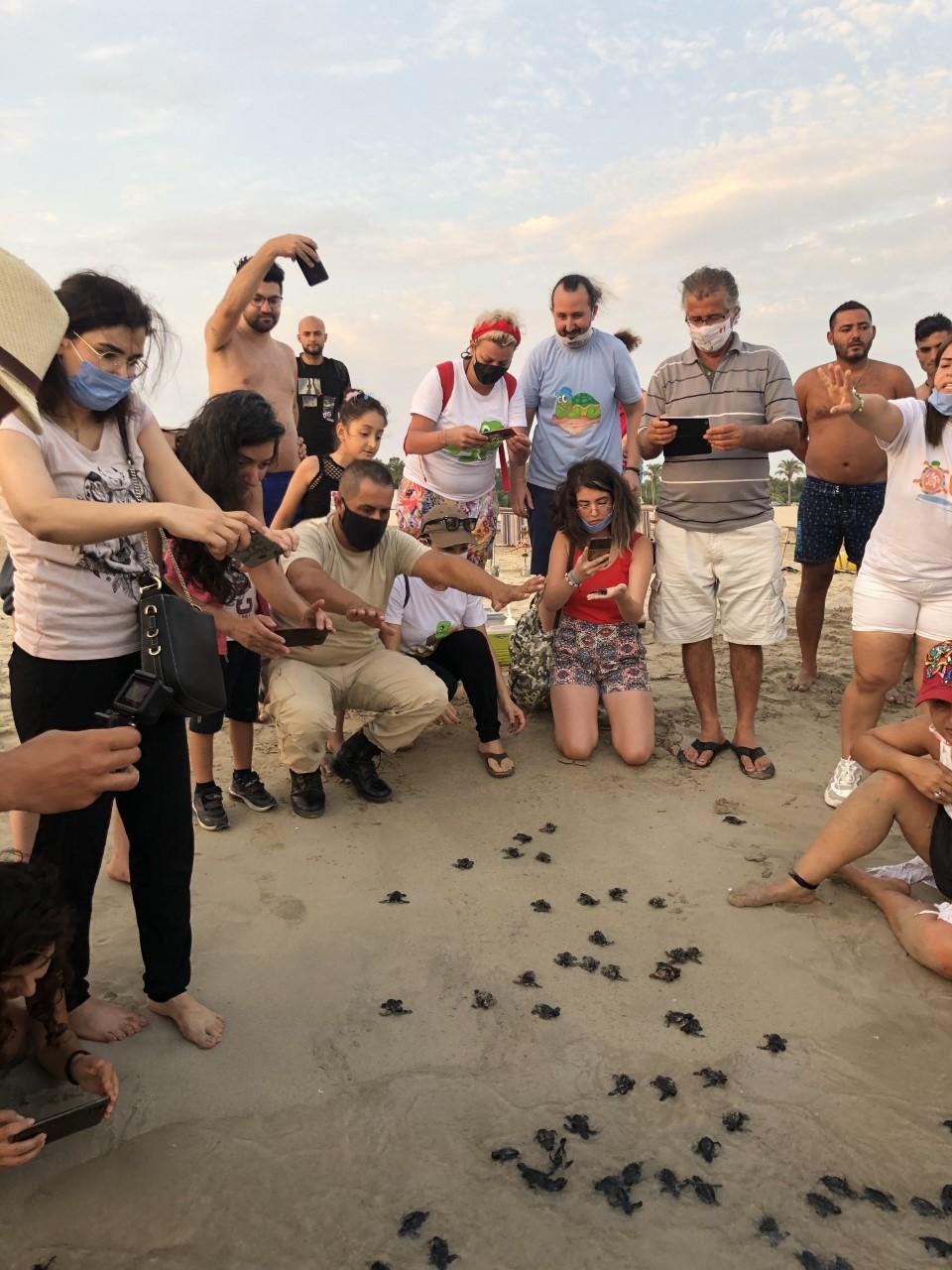Le projet ENSERES visite le Liban avec son programme de jumelage ASPIM. Durant trois jours à Tyre, des partenaires de Sfax et du parc naturel de Montgri échangent leurs expériences avec l’équipe de la réserve côtière de Tyre.

“Ce fut un succès, trois jours de dialogue qui joueront un rôle très important dans le futur de la Réserve”. Voici comment Ali Badreddine, biologiste marin de la réserve côtière de Tyre et coordinateur du projet ENSERES, commente la phase libanaise du programme de jumelage ASPIM (Aires Spécialement Protégées d'Importance Méditerranéenne). Du 6 au 9 juin, la splendide ville située au sud du Liban a accueilli les représentants de la municipalité de Sfax, en Tunisie, et des îles Montgri, Medes, et du parc naturel de Ter Bey, un paradis de la biodiversité situé au nord du littoral catalan.
Le premier jour d’activité a été dédié à la présentation de la commune de Tyre et de sa réserve naturelle. Tyre, ou Sur en arabe, est un ancien centre phénicien qui a toujours été au centre de l’histoire méditerranéenne, et a été reconnu en 1984 par l’UNESCO comme site du Patrimoine Mondial. La tradition et la culture sont accompagnées par l’immense valeur des ressources naturelles. Tyre est l’une des rares étendues intactes du littoral libanais, malheureusement caractérisé par la pollution, l’urbanisation excessive et l’érosion. La Réserve abrite de nombreuses et rares espèces animales et végétales, héberge un site de Ramsar et est un point de nidification très important pour les tortues marines.
Saba Guellouz du SPA/RAC en Tunisie, avec Ramon Alturo et Marc Casadella du parc de Montgri, ont eu l'opportunité de rencontrer les fermiers qui travaillent dans la région, ont traversé en bateau le bras de mer protégé et ont eu un long dialogue avec Hassan Dbouk, maire de Tyre et président de la réserve. Ils ont rencontré d'autres acteurs locaux lors d’un intense atelier de travail, et ont pu admirer l’héritage archéologique de la ville et regarder la remise en liberté d’une tortue, retournée à la mer après une longue période de soins. Chaque expérience, en relation organique avec les thèmes abordés durant l’atelier,a été utilisée pour comparer, et pour analyser les risques et les opportunités qui caractérisent les contextes marins et littoraux des trois différents et précieux recoins du bassin méditerranéen.
"En effet, une expérience fondamentale pour nous. Nous sommes parvenus à réunir toutes les communautés qui donnent vie à la région”, dit Ali Badreddine. “Nous avons étudié ensemble les menaces et les potentialités des sites culturels et environnementaux, les perspectives durables de l’agriculture et des pêcheries. Nous avons réuni tous les éléments en une stratégie. Et finalement, pendant trois jours, nous avons appris à reconnaître nos fortes ressemblances: nous autres libanais, tunisiens, espagnols, français et italiens, faisons partie d’une seule, très ancienne famille méditerranéenne. Nous devons maintenant travailler ensemble pour le futur”.
“It was a success, three days of dialogue that will play a very important role in the future of the Reserve”. This is how Ali Badreddine, marine biologist of the Tyre Coast Nature Reserve and project coordinator for ENSERES, comments on the Lebanese stage of the SPAMI (Specially Protected Areas of Mediterranean Importance) twinning programme. From 6 to 9 June 2022 the splendid city located in southern Lebanon hosted the representatives of the municipality of Sfax, Tunisia, and of the Montgri, Medes Islands and Ter Bay Natural Park, a paradise of biodiversity located on the northern Catalan coast.
The first day of activity was used for the presentation of the city of Tyre and its natural reserve. Tyre, or Sur in Arabic, is an ancient Phoenician centre that has always been at the heart of Mediterranean history, and was recognized in 1984 by UNESCO as a World Heritage Site. Tradition and culture are accompanied by the immense value of natural resources. Tyre is one of the few intact stretches of the Lebanese coast, unfortunately characterized by pollution, excessive urbanization and erosion. The Reserve contains numerous and rare plant and animal species, hosts a Ramsar site and is a very important nesting spot for sea turtles.
Saba Guellouz of SPA/RAC Tunisia, together with Ramon Alturo and Marc Casadella of the Montgri Park , had the opportunity to meet the farmers who work in the area, crossed by boat the protected stretch of sea and had a long dialogue with Hassan Dbouk, mayor of Tyre and president of the Reserve. They met with other local stakeholders during an intense workshop and were able to admire the archaeological heritage of the city and witness the release of a turtle, returned to the sea after a long period of treatment. Each experience, in organic relations with the themes discussed during the workshop, was used for comparison, for the analysis of the risks and opportunities that characterize the marine-coastal contexts of the three different and precious corners of the Mediterranean basin.
"Indeed, a fundamental experience for us. We managed to bring together all the communities that give life to the Reserve”, says Badreddine. “We have studied together the threats and potentialities of cultural and environmental sites, the sustainable prospects of agriculture and fisheries. We have put all the elements back together into a strategy. And finally, over the course of three days, we learned to recognize our strong similarities: Lebanese, Tunisians, Spanish, French and Italians, we are part of a single, very ancient Mediterranean family. Now we have to work together for the future”.







